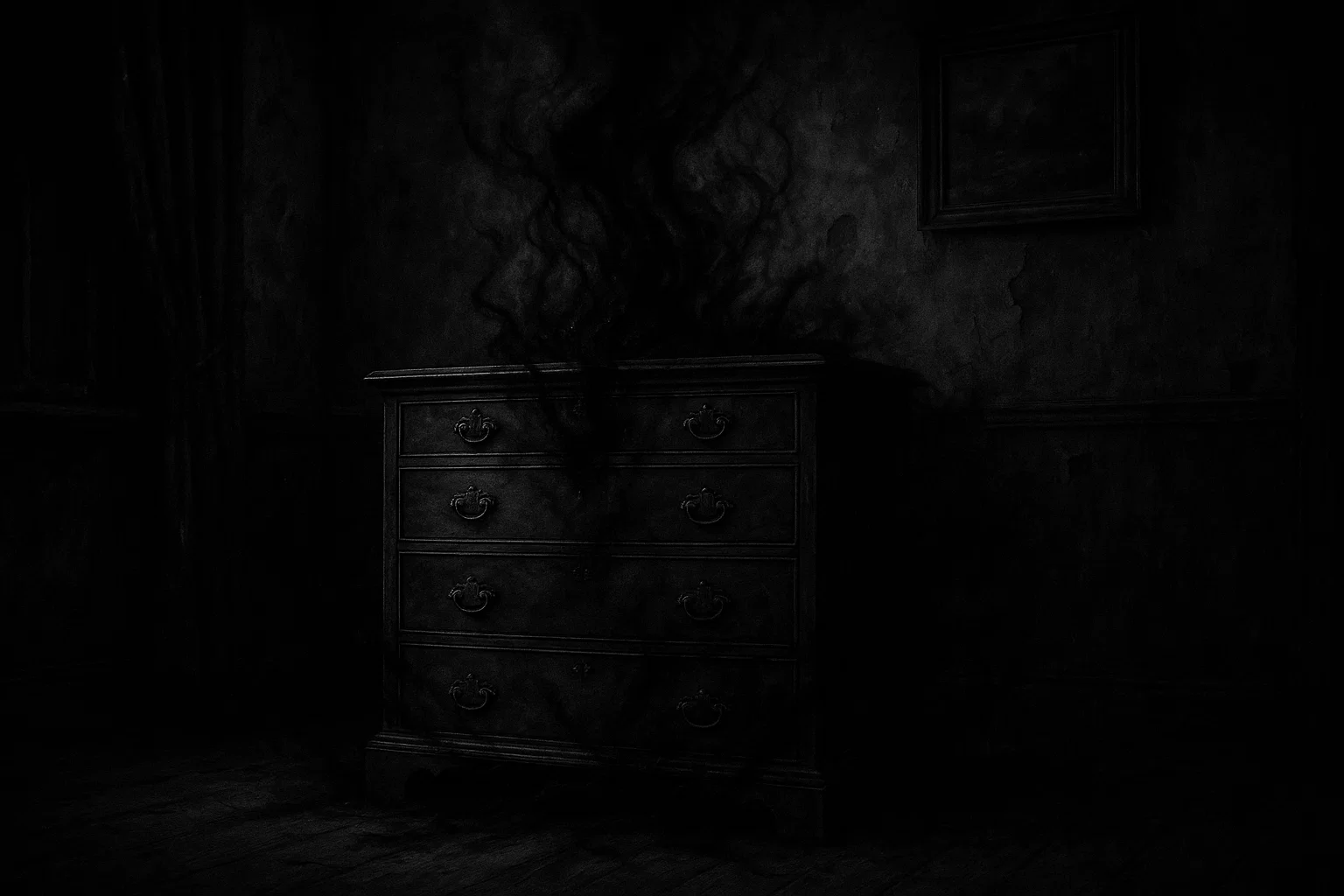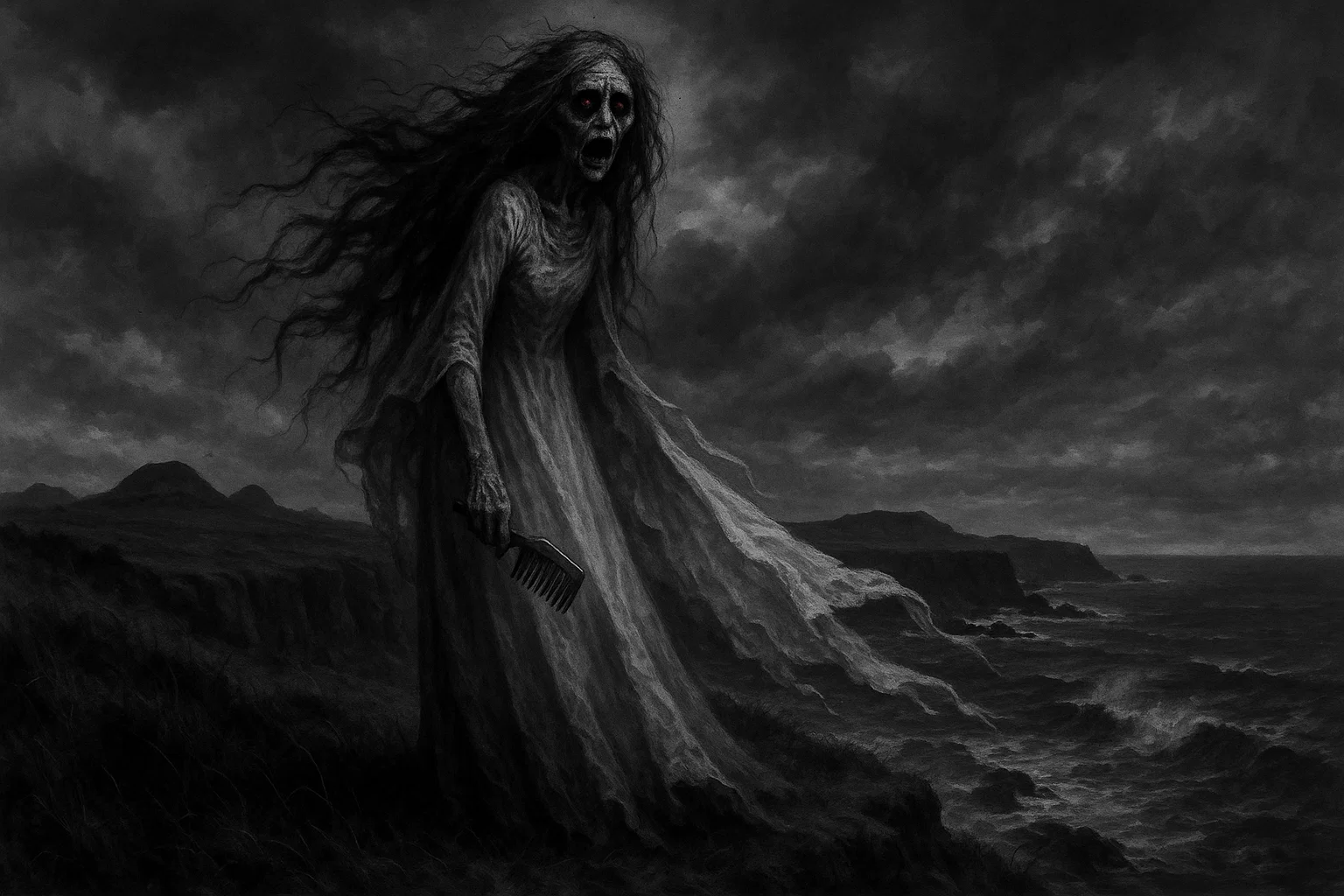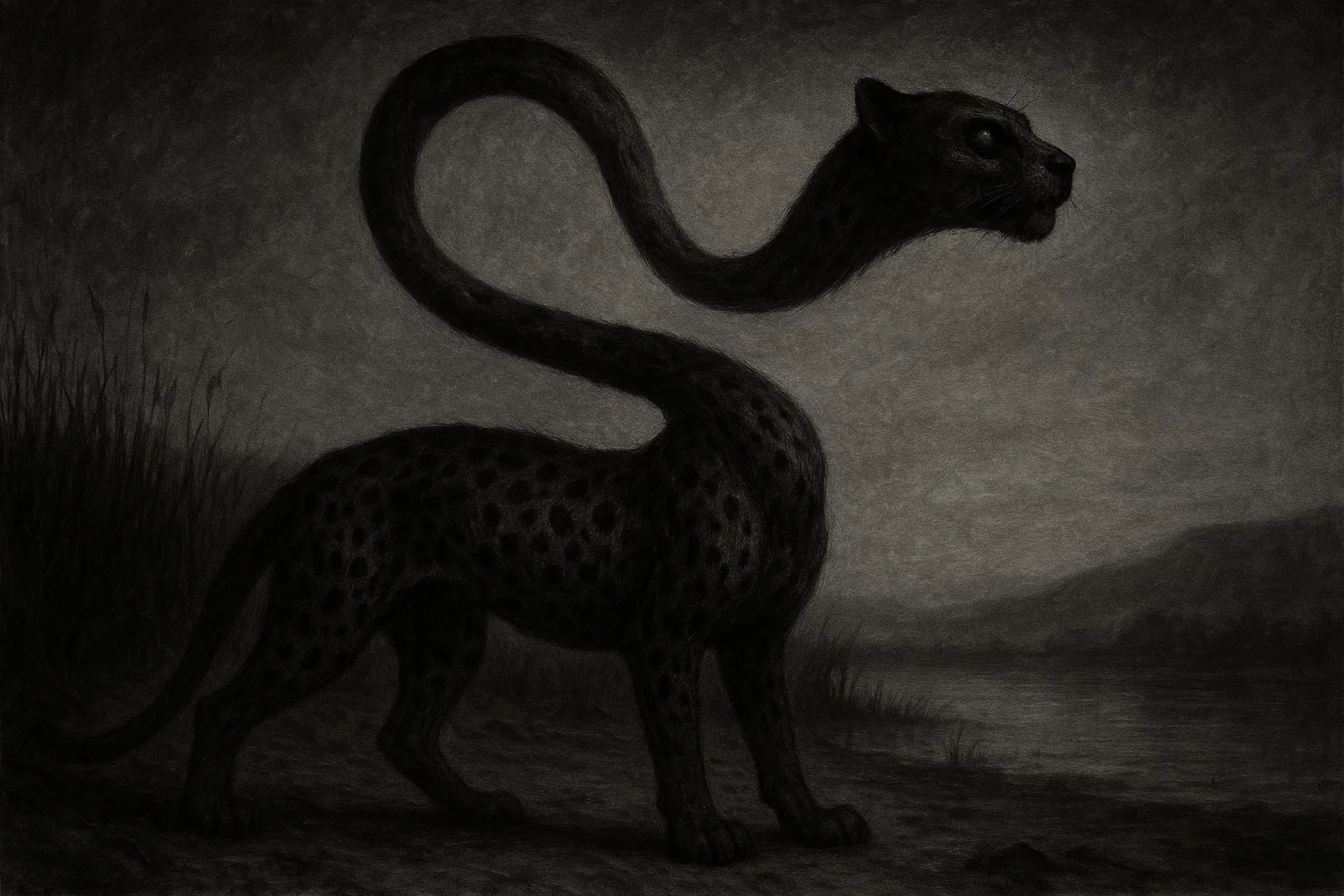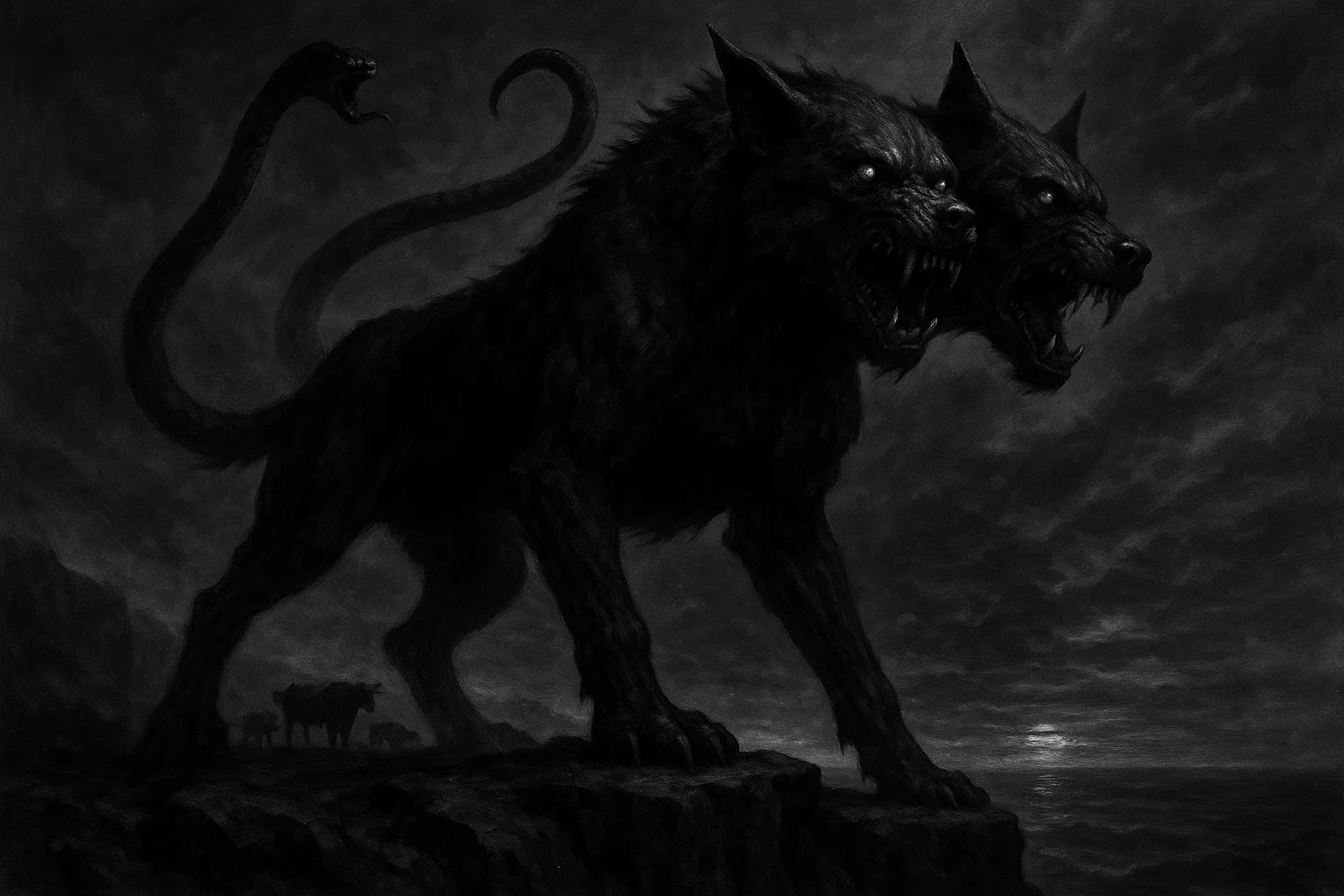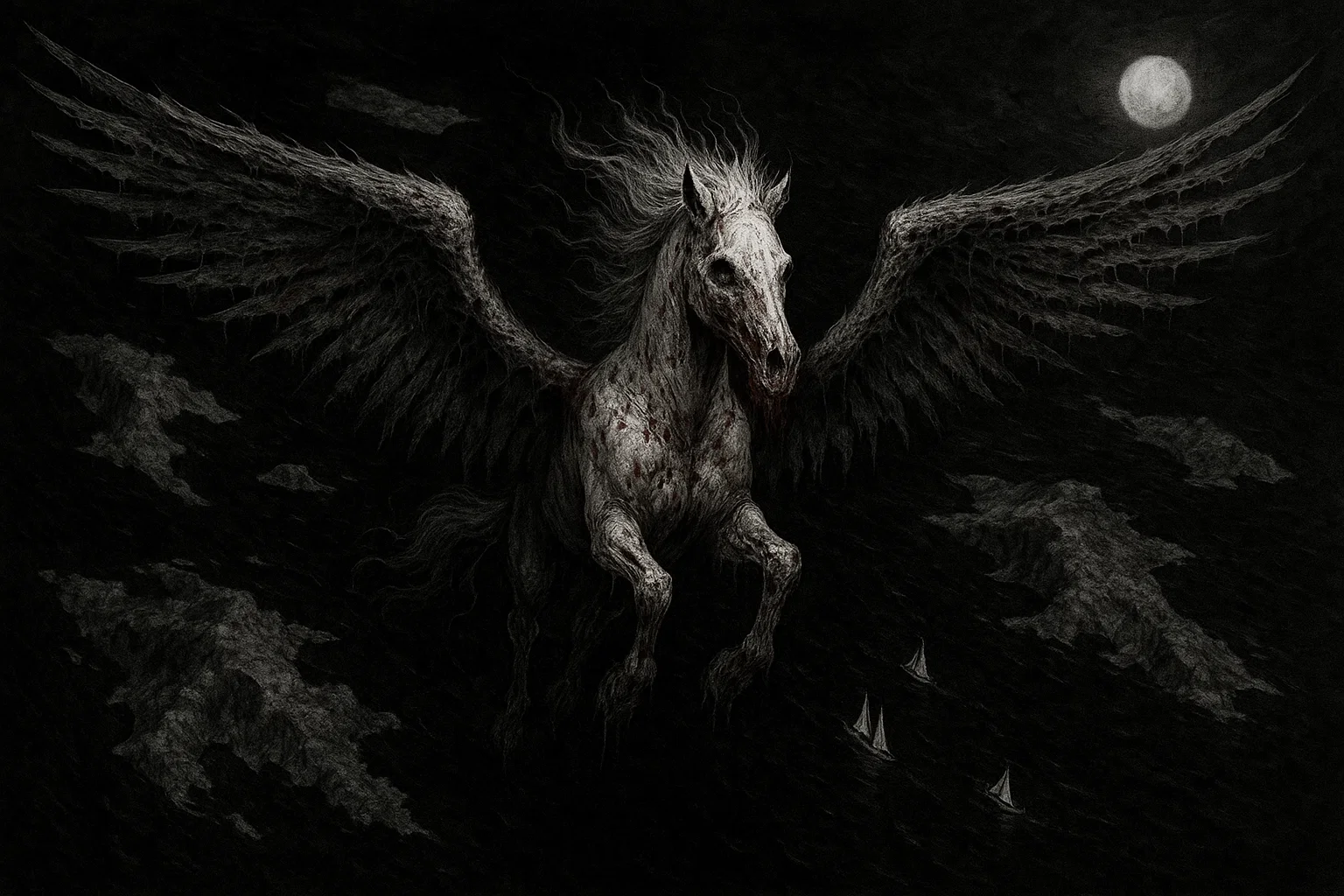In the heart of Kentucky, a seemingly ordinary piece of furniture hides a chilling secret. The Conjured Chest, a 19th-century mahogany chest of drawers, is infamous for its alleged curse, linked to a grim tally of 17-18 deaths.
Known as the Death Chest, this haunted artifact has sparked tales of misfortune, tragedy, and supernatural dread. From its creation in the 1830s to its current home in a Kentucky museum, the Conjured Chest weaves a dark narrative of curses, spirits, and unexplained events. What fuels its eerie legend?
Dive into the haunting history, witness accounts, and theories behind this cursed object, and discover how it compares to other sinister relics.
Summary
The Conjured Chest Haunted History
The Conjured Chest, a 4-foot-tall mahogany piece, boasts intricate floral carvings and four large drawers, its polished surface hiding scratches from decades of use—a deceptive beauty for a cursed artifact.
The Conjured Chest began its grim journey around 1830 in Kentucky, likely in Meade County, where it was crafted by an enslaved man named Remus for his owner, Jeremiah Graham.
This mahogany chest of drawers, designed for Graham’s newborn child, became the epicenter of a chilling curse. Unsatisfied with Remus’s craftsmanship, Graham brutally beat him, leading to Remus’s death.
In a vengeful act, fellow enslaved individuals performed a hoodoo ritual, sprinkling dried owl blood into the chest’s drawers to curse the Graham family and anyone who used it. This ritual, steeped in supernatural lore, marked the beginning of a century-long trail of tragedy.
The chest’s first victim was Jeremiah Graham’s infant son, who died around 1830 after his clothes were placed in the chest. This sudden death set a dark precedent.
The chest passed through the Graham family, then to the Hudson and Mayne families, leaving a wake of misfortune. Tragedies included murders, suicides, bizarre accidents, and untimely deaths, each tied to items stored in the chest.
Below are key events that fueled its cursed reputation:
- Jonathan Graham’s Son (c. 1851): On his 21st birthday, he was stabbed to death by his servant in Kentucky. His clothes, stored in the chest, linked the murder to the curse.
- John Ryan (Unknown Date): An Irish immigrant, John eloped with Catherine Winchell. Living on Graham land, they used the chest. John died in a freak accident in New Orleans while seeking work. Catherine soon fell ill and died.
- Louise Gregory (c. 1870s): A child of Eliza Ryan and John David Gregory, she died at age 10. Her clothes were found in the chest, deepening the family’s fear.
- Stella Stonecipher (c. 1897): After marrying Ernest Gregory in 1895, she placed her wedding clothes in the chest. She died within two years under mysterious circumstances.
- Chester Harlan (1901): The newborn of Mabel and Wilbur Harlan, he died at two weeks old. His baby clothes were stored in the chest.
- Wilbur Harlan (1905): Mabel’s husband died unexpectedly. His belongings were in the chest, adding to the grim tally.
- Emmett Gregory (December 1909): He fell 30 feet through a trestle in Kentucky, dying instantly. His gloves and scarf were in the chest.
- Eliza Gregory (April 4, 1915): She took her own life in Kentucky after moving the chest to her room, overwhelmed by grief and fear of the curse.
- Virginia Cary Hudson Cleveland’s Child (August 8, 1915): Born prematurely in Louisville, Kentucky, the infant died the same day. The baby’s clothes were in the chest.
- Ann Cary Cleveland (c. 1929): Virginia’s daughter contracted polio and suffered lifelong symptoms. Her clothes were stored in the chest.
- Wilbur Brister (December 9, 1944): Married to Virginia Hudson Cleveland in 1943, he died from an ether overdose. His clothes were in the chest.
- Herbert H. “Sonny” Moore Jr. (April 5, 1946): A neighbor, he died in a gun accident after storing his hunting clothes in the chest.
- Sallie’s Ritual (October 1946): An African-American maid attempted to break the curse with a ritual involving an owl and willow leaves. She died suddenly, becoming the 17th victim.
The chest’s dark history includes not only deaths but also bizarre incidents.
Richard Cleveland, Virginia’s son, was stabbed through the hand at school after using the chest. Fred Fraize deserted his wife, Nellie Gregory, after her wedding clothes were stored in it.
No fires are directly linked to the chest, but the pattern of violent deaths, suicides, and accidents suggests a malevolent force. In 1946, Virginia Cary Hudson Mayne sought to end the curse.
After Sallie’s ritual failed, Virginia donated the chest to a Kentucky museum in 1976, where it remains under strict display, its drawers empty to prevent further tragedy. The chest’s legacy, rooted in slavery, vengeance, and supernatural dread, continues to haunt Kentucky’s folklore.
You May Also Like: Bathsheba Sherman True Story: The Conjuring’s Real Witch?
The Conjured Chest Curse Manifestations
The Conjured Chest is notorious for its alleged curse manifestations, with detailed accounts of death and misfortune spanning over a century.
Below is a comprehensive table of all known incidents linked to the Conjured Chest, from 1830 to 2025:
| Event | Date | Victim/Owner | Details |
|---|---|---|---|
| Infant Death | c. 1830 | Jeremiah Graham’s son | Newborn died after clothes stored in chest. |
| Son’s Murder | c. 1851 | Jonathan Graham’s son | Stabbed by servant on 21st birthday; clothes in chest. |
| John Ryan’s Accident | Unknown | John Ryan | Died in accident seeking work; used chest with Catherine. |
| Catherine Winchell Ryan’s Death | Unknown | Catherine Winchell Ryan | Fell ill and died; used chest with John Ryan. |
| Louise Gregory’s Death | c. 1870s | Louise Gregory | Died at age 10; clothes in chest. |
| Stella Stonecipher’s Death | c. 1897 | Stella Stonecipher | Died within two years of 1895 marriage; wedding clothes in chest. |
| Chester Harlan’s Death | 1901 | Chester Harlan | Baby died at 2 weeks; clothes in chest. |
| Wilbur Harlan’s Death | 1905 | Wilbur Harlan | Died; clothes in chest. |
| John David Gregory’s Death | 1908 | John David Gregory | Died; chest moved to Eliza’s room afterward. |
| Emmett Gregory’s Accident | Dec 1909 | Emmett Gregory | Fell 30 feet through trestle; gloves and scarf in chest. |
| Fred Fraize’s Desertion | After 1905 | Fred Fraize | Deserted Nellie Gregory; her wedding clothes in chest. |
| Eliza Gregory’s Suicide | Apr 4, 1915 | Eliza Gregory | Took own life after moving chest to her room. |
| Virginia’s First Child’s Death | Aug 8, 1915 | Virginia Cary Hudson Cleveland’s child | Premature infant died; clothes in chest. |
| Ann Cary Cleveland’s Polio | c. 1929 | Ann Cary Cleveland | Contracted polio; clothes in chest. |
| Wilbur Brister’s Death | Dec 9, 1944 | Wilbur Brister | Died from ether overdose; clothes in chest. |
| Sonny Moore’s Accident | Apr 5, 1946 | Herbert H. “Sonny” Moore Jr. | Killed in gun accident; hunting clothes in chest. |
| Richard Cleveland’s Injury | Unknown | Richard Cleveland | Stabbed through hand at school; clothes in chest. |
| Sallie’s Death | Oct 1946 | Sallie | Died after curse-breaking ritual. |
Note: No incidents have been reported since 1976, when the chest was donated to a Kentucky museum. As of 2025, it remains on display, with no new accounts of paranormal activity.
Jeremiah Graham’s Infant Son (1830)
In the quiet of a Kentucky spring around 1830, the Conjured Chest claimed its first victim: the newborn son of Jeremiah Graham, a wealthy landowner in Meade County.
The chest, a finely crafted mahogany piece, was made by an enslaved artisan named Remus for the Graham family’s nursery. Intended to hold the infant’s linens, it became the centerpiece of a grim tragedy. Jeremiah, dissatisfied with Remus’s work, beat him so severely that he died.
In retaliation, fellow enslaved individuals performed a hoodoo ritual, a form of African-American folk magic, sprinkling dried owl blood into the chest’s drawers to curse the Graham lineage.
Days after the infant’s clothes were placed in the chest, his mother found him lifeless in the top drawer, wrapped in a soft blanket. The baby, born healthy just a week earlier, showed no signs of illness or injury, leaving the family stunned.
The sudden death, described in family records by Virginia Cary Hudson as a “child gone cold overnight,” sparked whispers of a supernatural curse. No medical records from the era exist, but the Grahams’ grief turned to fear as they linked the tragedy to Remus’s death and the ritual.
This incident marked the chest as a cursed artifact, setting the stage for its terrifying legacy in Kentucky’s haunted history.
You May Also Like: Who Is Astaroth, the Great Duke of Hell?
Jonathan Graham’s Son (1851)
Two decades later, in the autumn of 1851, the Conjured Chest struck again, claiming the life of Jonathan Graham’s son, a young man celebrating his 21st birthday on the Graham estate near Meade County, Kentucky.
The young heir, whose name is lost to history, was known for his charm and ambition within the family. On the night of his birthday, a small gathering turned deadly when his trusted body servant, an enslaved man who had served him for years, stabbed him in the chest with a kitchen knife.
The attack, sudden and unprovoked, occurred in a secluded corner of the estate, leaving the family in shock. The servant fled into the night, never to be found.
When relatives searched the young man’s room, they discovered his jacket, scarf, and other belongings neatly folded in the Conjured Chest, reigniting fears of the curse first whispered about in 1830. Virginia Cary Hudson’s family records describe the murder as a betrayal that “tore the heart from the Grahams.”
The family speculated that the chest’s malevolent force drove the servant to violence, though no motive was ever confirmed. This brutal supernatural tragedy, occurring 21 years after the infant’s death, suggested the curse’s enduring power, cementing the chest’s reputation as a death chest in family lore.
Emmett Gregory (1909)
On a cold December afternoon in 1909, Emmett Gregory, a hardworking farmer in his early 30s, met a gruesome end near Brandenburg, Kentucky.
A distant relative of the Gregory family, which had inherited the Conjured Chest through marriage, Emmett was inspecting a wooden railroad trestle for storm damage. Known for his caution, he was alone when he fell 30 feet to the rocky ground below, dying instantly from a shattered skull.
The coroner ruled it an accident, but the lack of witnesses puzzled the family. Emmett’s widow, Mary Gregory, found his work gloves and wool scarf, used daily, stored in the chest at their modest farmhouse.
Beverly Mayne Kienzle, in her family accounts, noted that Emmett had been “distracted” in the weeks prior, plagued by nightmares and a sense of dread he couldn’t explain.
Mary recalled him mentioning an eerie feeling near the chest, as if “something watched him.” The discovery of his belongings in the Conjured Chest horrified the family, who began to avoid it.
This freak accident, marked by its inexplicable nature, reinforced the belief in a supernatural force tied to the chest, adding another chapter to its haunted legacy.
Eliza Gregory (1915)
On the morning of April 4, 1915, Eliza Gregory, a widowed matriarch in her late 50s, was found dead in her Louisville, Kentucky home, a victim of her own hand.
Eliza, a pillar of the Gregory family, had endured years of loss, including her daughter Louise Gregory (died c. 1870s) and son Emmett Gregory (1909), both linked to the Conjured Chest.
In early 1915, she moved the chest to her bedroom, determined to confront the curse she believed was targeting her family. According to Virginia Cary Hudson’s writings, Eliza grew increasingly paranoid, claiming she heard whispers at night and saw shadowy figures near the chest.
Her daughter, checking on her after she missed breakfast, found Eliza hanging from a rafter, a brief note expressing despair over the family’s “doomed fate.”
The Conjured Chest, standing ominously in the room, contained Eliza’s shawl, Bible, and personal letters. Family members believed the chest’s malevolent energy drove her to suicide, amplifying her grief into hopelessness.
You May Also Like: Is the Grootslang Real? Snake, Elephant, or Something Else?
Virginia Cary Hudson Cleveland’s First Child (1915)
On August 8, 1915, Virginia Cary Hudson Cleveland suffered an unimaginable loss in Louisville, Kentucky, when her first child, a premature daughter, died hours after birth.
Virginia, a young mother in her 20s, had prepared a nursery with hand-stitched blankets and gowns, which were stored in the Conjured Chest—a family heirloom she was unaware carried a curse. The baby, born at seven months, was frail and struggled to breathe, passing away in her mother’s arms before dawn.
In her personal writings, Virginia described the heartbreak, noting the eerie coincidence of the chest’s involvement. Her husband, William Cleveland, later learned from older relatives about the chest’s haunted history, including its link to Eliza Gregory’s suicide just months earlier.
The discovery that the baby’s clothes were in the chest convinced Virginia of its malevolent power. She locked the chest in a storage room, refusing to use it again, and later wrote of it as a “devil’s box” that stole her child.
Sallie’s Curse-Breaking Ritual (1946)
In the early evening of October 12, 1946, Sallie, a 60-year-old African-American maid employed by Virginia Cary Hudson Mayne, became the Conjured Chest’s final known victim in Louisville, Kentucky.
Virginia, desperate to end the chest’s century-long trail of supernatural tragedies, turned to Sallie, who was versed in hoodoo traditions. Sallie devised a ritual to break the curse, using a dead owl, willow leaves boiled for 24 hours, and a clay jug buried under a flowering dogwood tree with the handle facing east to “trap the evil.”
According to Beverly Mayne Kienzle, Sallie performed the ritual in the backyard under moonlight, chanting and sprinkling owl feathers around the chest.
She warned Virginia that “someone must die” to seal the ritual, a chilling prophecy. Hours later, Sallie collapsed in the kitchen, clutching her chest, and died before a doctor could arrive—likely from a heart attack.
The family, devastated by her sudden death, believed the chest’s malevolent force claimed her as a sacrifice. Sallie’s bravery and tragic end, documented by Beverly, prompted Virginia to donate the chest to a Kentucky museum in 1976, hoping to end its dark legacy.
Theories
The Conjured Chest, a haunted artifact from 19th-century Kentucky, has ignited fierce debate over its alleged supernatural curse. Is it a vessel of dark forces or a product of coincidence and human imagination? The chest’s grim reputation, tied to numerous tragedies, has prompted both paranormal and rational explanations.
Paranormal Perspectives
Hoodoo Curse
The hoodoo curse theory suggests that the Conjured Chest was imbued with a malevolent force through a ritual rooted in hoodoo, a spiritual practice blending African, Native American, and European traditions.
This theory fits because hoodoo often involves rituals to invoke justice or retribution, which aligns with the chest’s origin story.
The use of owl blood—a potent symbol in some African spiritual traditions for death or transformation—could theoretically channel a curse to punish wrongdoers. The chest’s consistent association with misfortune across multiple families over a century supports the idea of a targeted supernatural force.
Paranormal researchers, such as those studying cursed objects in the South, note that hoodoo rituals can bind spiritual energy to physical items, making the chest a conduit for vengeance.
However, this theory falters under scrutiny. No scientific evidence validates hoodoo rituals as capable of causing physical harm. The reliance on oral accounts of the ritual’s details, such as specific ingredients or incantations, raises questions about their accuracy.
Modern hoodoo practitioners emphasize healing and protection, not curses, suggesting the ritual’s malevolent intent may be a historical exaggeration.
You May Also Like: What Is Momo the Monster? Missouri’s Creepiest Legend
Trapped Spirits
Another paranormal theory posits that the Conjured Chest traps the spirits of those wronged, creating a haunted artifact that lashes out at the living. This fits because objects tied to intense trauma—such as a violent death—can, in paranormal lore, become anchors for restless spirits.
The chest’s creation under duress and its subsequent tragedies suggest it could harbor a vengeful entity, perhaps seeking justice for past injustices.
Paranormal investigations in the 1970s, conducted when the chest was donated to a Kentucky museum, reported unusual cold spots and feelings of unease near it, hinting at a spiritual presence.
The diversity of misfortunes—ranging from violent acts to sudden illnesses—could reflect a spirit’s unpredictable wrath. Yet, this theory lacks concrete evidence.
Cold spots and subjective feelings are not definitive proof of spirits, as they could stem from environmental factors like drafts or psychological suggestion.
Skeptics argue that without verifiable spectral activity, such as clear apparitions or recorded voices, the trapped spirits theory remains speculative, rooted in folklore rather than fact.
Negative Energy Vortex
The negative energy vortex theory proposes that the Conjured Chest acts as a magnet for harmful energy, amplifying misfortune for those who interact with it.
In paranormal research, objects involved in traumatic events can absorb and radiate negative energy, creating a supernatural phenomenon that disrupts lives.
This theory fits because the chest’s creation was marked by a profound act of cruelty, potentially charging it with dark energy. The pattern of tragedies across unrelated families suggests an external force, not tied to a specific spirit, but rather a pervasive aura of doom.
Some paranormal experts claim that wooden objects, like the chest’s mahogany frame, can retain emotional imprints, acting as a “battery” for negative energy.
However, the concept of negative energy is scientifically intangible, impossible to measure or verify. The absence of reported incidents since the chest’s museum display in 1976 challenges this theory, as a true vortex should continue to affect visitors or staff.
Without consistent activity, the idea of a persistent energy field loses credibility, appearing more as a metaphysical hypothesis than a proven phenomenon.
Demonic Influence
The demonic influence theory suggests that the Conjured Chest was infused with a demonic entity during its creation, making it a conduit for evil. This fits within certain paranormal frameworks where rituals, especially those involving blood, can inadvertently summon malevolent forces.
The chest’s ability to cause diverse tragedies—violent, psychological, and accidental—could indicate a powerful entity with broad influence. Historical accounts of demonic possession in cursed objects, like those studied in 19th-century occultism, describe similar patterns of chaos.
Some witnesses reported feelings of dread or oppressive atmospheres near the chest, consistent with demonic lore. However, this theory lacks empirical support.
Demonic entities are a religious concept, not a scientific one, and no physical evidence, such as consistent paranormal activity or exorcism records, ties the chest to demons.
The variety of tragedies could be attributed to natural causes, and the absence of recent incidents undermines the idea of an active demonic presence, suggesting human fear may have amplified the chest’s reputation.
You May Also Like: Messages from Beyond | Horror Story
Rational Perspectives
Coincidence
The coincidence theory argues that the Conjured Chest’s tragedies are unrelated events, mistakenly linked by superstition.
In the 19th and early 20th centuries, life expectancy in Kentucky was low, averaging 40-50 years due to diseases like tuberculosis and poor sanitation.
Occupational hazards, such as farming accidents, were common, with 30% of rural deaths in the 1800s attributed to mishaps. The chest’s association with multiple families over decades increases the likelihood that random tragedies were attributed to it.
This theory fits because no statistical analysis shows a higher death rate among chest users compared to the general population.
However, the consistent link—each victim had belongings in the chest—challenges pure chance. The specificity of the connection, spanning different types of deaths, suggests a pattern that coincidence alone struggles to explain, making this theory plausible but not definitive.
Psychological Fear
The psychological fear theory suggests that belief in the Conjured Chest’s curse created a self-fulfilling prophecy, where anxiety drove tragic outcomes.
Fear of curses can elevate stress hormones like cortisol, which studies show can impair decision-making and increase accident risk by up to 20%.
Families aware of the chest’s reputation may have experienced heightened paranoia, leading to reckless behavior or mental strain. This theory fits because cultural beliefs in curses were prevalent in 19th-century rural communities, where superstition often explained misfortune.
However, it falters with victims unaware of the curse, such as young children or new family members. Their lack of prior knowledge undermines the idea that fear alone caused their fates, suggesting other factors may be at play.
Historical Exaggeration
The historical exaggeration theory posits that the Conjured Chest’s curse was amplified through storytelling, inflating its impact. In oral traditions, common in Kentucky’s rural communities, tales of misfortune grow over time, with 70% of folklore accounts showing embellishment within a generation, according to cultural studies.
The chest’s story, passed through families, may have been exaggerated to create a compelling narrative, attributing unrelated deaths to it. This theory fits because the chest’s legend relies heavily on unverified family accounts, which could blend fact with myth.
However, the presence of documented dates and names in family records lends some credibility, challenging the idea of pure fabrication. The consistency of the narrative across decades suggests a kernel of truth, making this theory only partially convincing.
Environmental Factors
The environmental factors theory proposes that the Conjured Chest may have been contaminated with harmful substances, like mold or lead-based varnish, causing health issues.
In the 1800s, furniture was often treated with toxic finishes, and mold growth was common in damp Kentucky homes, with 25% of households reporting respiratory issues tied to poor ventilation.
This could explain illnesses or deaths among users. The theory fits because the era’s lack of hygiene standards made such hazards plausible.
However, no tests have confirmed toxins in the chest, and its current museum display shows no health risks to visitors. The diverse causes of death—stabbing, psychological distress, accidents—don’t align with a single environmental cause, weakening this explanation against the broader pattern.
You May Also Like: Photographs from Another World | Horror Story
The Conjured Chest vs Other Cursed Objects
The Conjured Chest shares its sinister reputation with other cursed objects, each tied to tales of misfortune and supernatural dread:
| Object Name | Type | Origin | Curse Description | Number of Reported Incidents | Current Location | Notable Owners/Events |
|---|---|---|---|---|---|---|
| Hope Diamond | Diamond | India, 17th century | Stolen from a Hindu statue; brings death, financial ruin | Dozens, including suicides, bankruptcies | Smithsonian, Washington, D.C. | Marie Antoinette, Evelyn Walsh McLean |
| Robert the Doll | Doll | Key West, FL, 1900s | Causes misfortune to those who disrespect it | Numerous accidents, illnesses | East Martello Museum, Key West | Gene Otto, multiple owners |
| Dybbuk Box | Wine cabinet | Unknown, 20th century | Contains a malevolent spirit; causes illness, nightmares | Several illnesses, paranormal events | Private collection | Kevin Mannis, various owners |
| Crying Boy Painting | Painting | UK, 1950s | Survives house fires; blamed for disasters | Many fire-related incidents | Various locations, often destroyed | Multiple owners, often gifted |
| Hands Resist Him | Painting | USA, 1972 | Causes nightmares, unease | Reports of paranormal activity | Private collection | Bill Stoneham, various owners |
| Busby Stoop Chair | Chair | UK, 1702 | Cursed by Thomas Busby; sitters die unexpectedly | Multiple mysterious deaths | Thirsk Museum, UK | Thomas Busby, various sitters |
| Woman of Lemb Statue | Statue | Cyprus, 3500 BC | Causes death to owners | Multiple family deaths | Unknown | Lord Elphont, multiple owners |
| Pompeii Artifacts | Various | Italy, 79 AD | Stolen items bring misfortune | Hundreds of illnesses, accidents | Returned to Pompeii museums | Various tourists |
| Bela Lugosi Mirror | Mirror | USA, 20th century | Used for clairvoyance; causes paranormal activity | Reports of bites, shadowy figures | Haunted Museum, Las Vegas | Bela Lugosi, Frank Saletri |
| Koh-i-Noor Diamond | Diamond | India, 14th century | Brings misfortune to male owners | Many defeats, deaths | Tower of London, UK | Mughal Emperors, British monarchs |
The Conjured Chest stands out for its high death toll (17-18) and specific hoodoo curse origin, unlike the Hope Diamond’s vague theft-related curse or Robert the Doll’s focus on disrespect.
Its connection to a ritual and consistent tragedies across families make it unique. Compared to the Dybbuk Box, which involves a single spirit, the chest’s curse affects a broader range of victims, from infants to adults.
Unlike the Crying Boy Painting, which is tied to fires, the chest’s tragedies span murders, suicides, and accidents, making it one of the most versatile and deadly cursed objects in folklore.
Is The Conjured Chest Curse Real?
The Conjured Chest remains a chilling enigma, with 17-18 deaths tied to its haunted history. Detailed family accounts, like those from Virginia Cary Hudson and Beverly Mayne Kienzle, document a pattern of tragedy—murders, suicides, and bizarre accidents—that suggests a supernatural force.
Paranormal investigations, including electromagnetic readings, hint at an otherworldly presence. The 1946 ritual, ending in Sallie’s death, adds weight to the curse’s reality. Yet, skeptics argue these events are coincidences, amplified by 19th-century high mortality rates and psychological fear.
The chest’s inactivity since 1976, when it was donated to a Kentucky museum, suggests the curse may have been broken or never existed.
As of May 2025, the Conjured Chest sits in a locked display case at the Kentucky Historical Society, its mahogany frame well-preserved but untouched by visitors due to strict no-contact policies.
No incidents have been reported since its donation in 1976, suggesting the curse may have faded or never existed.
However, recent unverified social media posts from 2024 claim blurry photos taken near the chest show shadowy figures, sparking renewed debate among paranormal enthusiasts.
Whether a relic of supernatural dread or a product of folklore, the Conjured Chest continues to captivate, inviting visitors to ponder the line between superstition and reality in its enduring haunted legacy.

